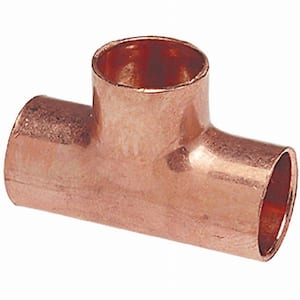From Art to Functionality: The Many Applications of Distinct Copper Products
From Art to Functionality: The Many Applications of Distinct Copper Products
Blog Article
How Copper Products Add To Lasting Practices in Numerous Industries
Copper products are increasingly recognized for their considerable payments to sustainable techniques throughout multiple markets, driven by their integral buildings such as durability, recyclability, and efficiency. In renewable resource systems, for instance, copper enhances the capability of solar and wind technologies, while its application in building and construction decreases waste with durability. The material's antimicrobial features use appealing advantages in healthcare settings. As markets look for to adopt even more lasting methods, the duty of copper might prove crucial in attaining ecological objectives. What effects might this have for future advancements in sustainability?
Copper in Renewable Power
Copper plays a critical duty in the improvement of renewable resource technologies, offering as an important conductor in numerous applications. Its outstanding electric conductivity and resistance to deterioration make it a suitable product for electrical circuitry, which is important in photovoltaic panels, wind generators, and energy storage systems. In solar photovoltaic or pv systems, copper is made use of in the affiliations and wiring, enabling efficient energy conversion from sunshine to electricity.
In wind energy, copper is important to the generators and transformers that convert kinetic power right into electric power, making certain ideal efficiency and reliability. The demand for electrical vehicles (EVs) is enhancing, with copper being a crucial part in batteries, electric motors, and charging facilities. The transition to EVs dramatically enhances the demand for copper, as these vehicles usually make use of four times more copper than traditional interior combustion engine cars.
As the world seeks to reduce climate adjustment and shift to lasting energy sources, copper's role becomes significantly essential. The material not only improves the effectiveness and longevity of eco-friendly energy systems but likewise supports the wider objective of decreasing greenhouse gas discharges and promoting a sustainable future.
Eco-Friendly Building And Construction Products
In recent years, there has actually been a significant shift towards the fostering of environmentally friendly construction materials in response to growing environmental problems. This modification is encouraged by the demand for sustainable options that lessen environmental footprints while preserving architectural stability and visual allure.
Copper, understood for its toughness and recyclability, has become a principal in this industry. It can be utilized in roofing, plumbing, and electrical systems, adding to power effectiveness and decreasing waste. Copper's long life implies less replacements gradually, additional improving its sustainability account.
Furthermore, products such as bamboo, redeemed wood, and recycled steel are obtaining popularity. These choices not only offer reduced ecological influence however additionally promote source preservation. As developing codes progressively emphasize sustainability, building contractors and architects are integrating these materials right into their jobs, cultivating innovation in layout.
The boosting fostering of environment-friendly construction products mirrors a wider commitment to sustainability in the developed setting. By prioritizing these materials, the construction market can substantially lower its carbon impact, align with regulatory requirements, and sustain a healthier ecological community for future generations. This pattern notes an essential step in the direction of a more sustainable future in building and construction.
Copper's Role in Health care
Recent researches have actually highlighted the substantial duty of copper in healthcare settings, particularly because of its antimicrobial residential or commercial properties. Copper surface areas have been revealed to minimize the visibility of microorganisms, including viruses and bacteria, by up to 99.9% within a brief duration. This remarkable efficacy makes copper an important material for high-touch surface areas in medical facilities, such as doorknobs, bed rails, and IV poles, thereby contributing to boosted infection control procedures.
In enhancement to its straight antimicrobial impacts, copper also contributes in the broader context of medical facility sustainability (Copper Resources Products). By incorporating copper into clinical equipment and furnishings, health care facilities can reduce the occurrence of healthcare-associated infections (HAIs), which not just boosts client end results however also decreases the prices related to prolonged health center stays and added therapies
Additionally, copper's resilience and recyclability line up with sustainable techniques, allowing for responsible source management. As health care systems increasingly focus on both person security and ecological stewardship, the combination of copper items is coming to be much more common. This twin advantage emphasizes copper's important payment to a healthier, much safer, and extra lasting health care environment.
Sustainability in Transportation

Additionally, copper's toughness and deterioration resistance add to the durability of transportation framework (Copper Products). In rail systems, for example, copper components improve the dependability and effectiveness of signaling and power systems, important for minimizing hold-ups and energy usage. In addition, copper's duty in renewable resource systems, such as solar and wind, supports sustainable transport solutions by providing tidy energy for electrical transportation options
Investments in copper innovation not only foster sustainability however likewise stimulate economic growth and job development in eco-friendly sectors. As markets strive to satisfy stringent ecological policies, the application of copper items in transport emerges as a critical technique in accomplishing sustainability objectives and advertising a cleaner, a lot more reliable future.
Copper and Circular Economic Climate
As the world progressively accepts sustainability, the role of copper in the round economy ends up being ever before much more significant. Copper's innate homes-- such as its conductivity, recyclability, and longevity-- setting it as an essential product in a resource-efficient economic climate. The circular economic situation aims to lessen waste and take More about the author full advantage of resource use with recycling and reusing materials, and copper excels in this regard.
The steel can be recycled indefinitely without loss of quality, making it a perfect prospect for lasting methods throughout various industries, consisting of building, electronic devices, and eco-friendly energy. By reprocessing and recuperating copper from end-of-life items, sectors my link can substantially reduce the need for virgin materials, thus reducing environmental influences related to mining and handling.
Additionally, the combination of copper into round economic situation frameworks not just saves resources but likewise promotes advancement. Companies that prioritize copper reusing add to an extra sustainable supply chain, boosting their competitiveness while straightening with governing demands and customer choices for environmentally accountable items.
Conclusion
To conclude, copper items substantially add to sustainable practices throughout multiple sectors. Their important function in improving renewable resource innovations, advertising eco-friendly building and construction products, supporting infection control in medical care, promoting sustainable transport, and embodying the concepts of a round economic situation emphasizes the adaptability and relevance of copper. By incorporating copper right into different applications, markets can attain greater performance, reduce environmental effect, and line up with international sustainability objectives, ultimately cultivating a much more sustainable future.

Copper's exceptional conductivity makes it a favored material in electric car (EV) systems, improving energy efficiency and efficiency. In addition, copper's role in renewable power systems, such as solar and wind, sustains lasting transport solutions by offering tidy energy for electric transit choices.
Their crucial function in boosting renewable power innovations, promoting environment-friendly building and construction materials, sustaining infection control in medical care, assisting in sustainable transportation, and symbolizing the concepts of a round economic situation highlights the flexibility and importance of copper.
Report this page